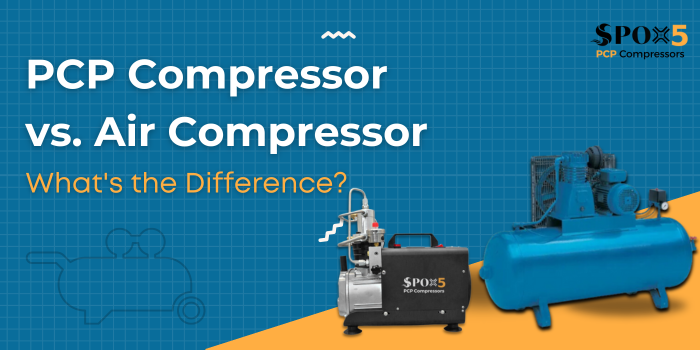In the world of compressed air, two terms often get thrown around interchangeably: PCP compressors and air compressors. But while they both compress air, these machines are designed for very different purposes. Understanding the key distinctions between them is crucial before making a purchase.
What is a PCP Compressor?
PCP stands for Pre-Charged Pneumatic. A PCP compressor, also known as a high-pressure air (HPA) compressor, is specifically designed to fill PCP airguns and other equipment requiring very high-pressure air, typically ranging from 2,000 to 4,500 psi (pounds per square inch).
Here are some key characteristics of PCP compressors:
- High Pressure Output: Unlike standard air compressors which max out around 150 psi, PCP compressors are built for much higher pressure applications.
- Multi-Stage Compression: PCP compressors often utilize multi-stage compression systems to achieve the desired pressure levels efficiently.
- Cooling System: The high-pressure nature of PCP compressors necessitates a robust cooling system to prevent overheating during operation.
- Slower Fill Rates: Due to the high pressure involved, filling PCP air tanks takes longer compared to standard air compressors filling low-pressure tools.
- Safety Features: Given the high pressure, PCP compressors typically come equipped with automatic shutoff mechanisms and pressure gauges for safe operation.
What is a Standard Air Compressor?
Standard air compressors are workhorses in various industries and home workshops. They are designed to deliver a high volume of air at a moderate pressure, usually ranging from 30 to 150 psi.
Here are some key characteristics of standard air compressors:
- Lower Pressure Output: Standard air compressors cater to tasks requiring moderate air pressure for tools like nail guns, paint sprayers, and inflators.
- Simpler Design: Standard air compressors often have a simpler design with single-stage compression systems, making them more affordable and compact.
- Faster Fill Rates: Due to the lower pressure requirements, standard air compressors can fill tanks or operate tools much quicker.
- Limited Safety Features: Standard air compressors might have basic safety features like pressure relief valves, but may not have the same level of safety features as PCP compressors due to the lower pressure they handle.
Applications: A Telling Difference
The most significant difference between PCP and standard air compressors lies in their applications.
- PCP Compressors: Primarily used for filling PCP airguns, PCP compressors can also find use in applications requiring high-pressure air, such as:
- Paintball guns
- Airbrushing
- Inflating high-pressure tyres (e.g., bicycles, motorcycles)
- PCP pellet rifles
- Note: It’s crucial to consult the user manual of any equipment before using a PCP compressor to ensure compatibility and safe operation.
- Standard Air Compressors: Used for a wide array of tasks requiring moderate air pressure, such as:
- Powering pneumatic tools (nail guns, staplers, impact wrenches)
- Inflating tyres (cars, bikes)
- Airbrushing (with a lower pressure requirement)
- Blowing dust and debris
- Painting (depending on the sprayer type)
Choosing the Right Compressor
Now that you understand the key differences, how do you choose the right compressor for your needs?
- Consider the Pressure Requirements: The most crucial factor is the pressure needed for your intended use. If you need to fill PCP airguns or require high-pressure air, a PCP compressor is the only option.
- Think About Volume and Fill Rates: If you need to quickly inflate tyres or power tools frequently, a standard air compressor with a higher volume output might be preferable.
- Portability: PCP compressors can be bulky and heavy due to their robust build and cooling systems. Standard air compressors come in various sizes, with some offering portability for on-site jobs.
- Budget: PCP compressors are generally more expensive than standard air compressors due to their specialized design and higher pressure capabilities.
Safety First
Always prioritize safety when using any compressor. Here are some general safety tips:
- Read the manual: Thoroughly understand the specific instructions and safety precautions outlined in the manufacturer’s manual for your compressor.
- Wear safety glasses: Eye protection is crucial to shield yourself from debris or potential shrapnel in case of a malfunction.
- Maintain proper ventilation: Ensure adequate ventilation in the workspace to avoid inhaling harmful fumes or dust.
- Never exceed pressure limits: Do not attempt to fill tanks or equipment beyond their rated pressure capacity.
- Regular maintenance: Perform routine maintenance tasks as specified in the manual to ensure optimal performance and safety.
Try the SPOX5 300 bar PCP compressor to guarantee its correct use. See details here

